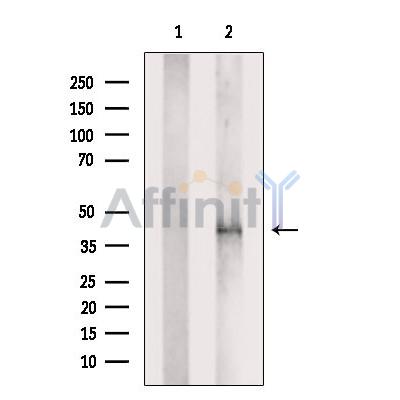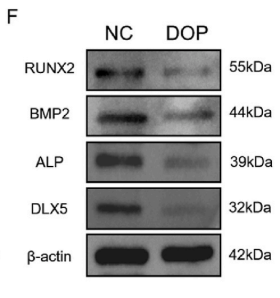PDLIM3 Antibody - #DF12525
| Product: | PDLIM3 Antibody |
| Catalog: | DF12525 |
| Description: | Rabbit polyclonal antibody to PDLIM3 |
| Application: | WB IHC IF/ICC |
| Cited expt.: | WB, IHC |
| Reactivity: | Human, Mouse, Rat |
| Prediction: | Dog |
| Mol.Wt.: | 35,39 kDa; 39kD(Calculated). |
| Uniprot: | Q53GG5 |
| RRID: | AB_2845487 |
Related Downloads
Protocols
Product Info
*The optimal dilutions should be determined by the end user.
*Tips:
WB: For western blot detection of denatured protein samples. IHC: For immunohistochemical detection of paraffin sections (IHC-p) or frozen sections (IHC-f) of tissue samples. IF/ICC: For immunofluorescence detection of cell samples. ELISA(peptide): For ELISA detection of antigenic peptide.
Cite Format: Affinity Biosciences Cat# DF12525, RRID:AB_2845487.
Fold/Unfold
Actinin associated LIM protein; Actinin-associated LIM protein; Alpha actinin 2 associated LIM protein; Alpha-actinin-2-associated LIM protein; DKFZp686L0362; Enigma homolog; PDLI3_HUMAN; PDLIM 3; PDLIM3; PDZ and LIM domain 3; PDZ and LIM domain protein 3; ALP;PDLI3;
Immunogens
A synthesized peptide derived from human ALP, corresponding to a region within the internal amino acids.
Isoform 1 is highly expressed in differentiated skeletal muscle. Isoform 2 is heart-specific.
- Q53GG5 PDLI3_HUMAN:
- Protein BLAST With
- NCBI/
- ExPASy/
- Uniprot
MPQTVILPGPAPWGFRLSGGIDFNQPLVITRITPGSKAAAANLCPGDVILAIDGFGTESMTHADAQDRIKAAAHQLCLKIDRGETHLWSPQVSEDGKAHPFKINLESEPQDGNYFEHKHNIRPKPFVIPGRSSGCSTPSGIDCGSGRSTPSSVSTVSTICPGDLKVAAKLAPNIPLEMELPGVKIVHAQFNTPMQLYSDDNIMETLQGQVSTALGETPLMSEPTASVPPESDVYRMLHDNRNEPTQPRQSGSFRVLQGMVDDGSDDRPAGTRSVRAPVTKVHGGSGGAQRMPLCDKCGSGIVGAVVKARDKYRHPECFVCADCNLNLKQKGYFFIEGELYCETHARARTKPPEGYDTVTLYPKA
Predictions
Score>80(red) has high confidence and is suggested to be used for WB detection. *The prediction model is mainly based on the alignment of immunogen sequences, the results are for reference only, not as the basis of quality assurance.
High(score>80) Medium(80>score>50) Low(score<50) No confidence
Research Backgrounds
May play a role in the organization of actin filament arrays within muscle cells.
Cytoplasm>Myofibril>Sarcomere>Z line.
Note: Localizes to myofiber Z-lines.
Isoform 1 is highly expressed in differentiated skeletal muscle. Isoform 2 is heart-specific.
References
Application: IHC Species: Mice Sample: bone and osteoid tissues
Application: WB Species: Human Sample: Human bone mesenchymal stem cells(hBMSCs)
Application: WB Species: rat Sample: BMMSCs
Application: WB Species: Human Sample: DPSCs
Application: IHC Species: human Sample:
Restrictive clause
Affinity Biosciences tests all products strictly. Citations are provided as a resource for additional applications that have not been validated by Affinity Biosciences. Please choose the appropriate format for each application and consult Materials and Methods sections for additional details about the use of any product in these publications.
For Research Use Only.
Not for use in diagnostic or therapeutic procedures. Not for resale. Not for distribution without written consent. Affinity Biosciences will not be held responsible for patent infringement or other violations that may occur with the use of our products. Affinity Biosciences, Affinity Biosciences Logo and all other trademarks are the property of Affinity Biosciences LTD.













